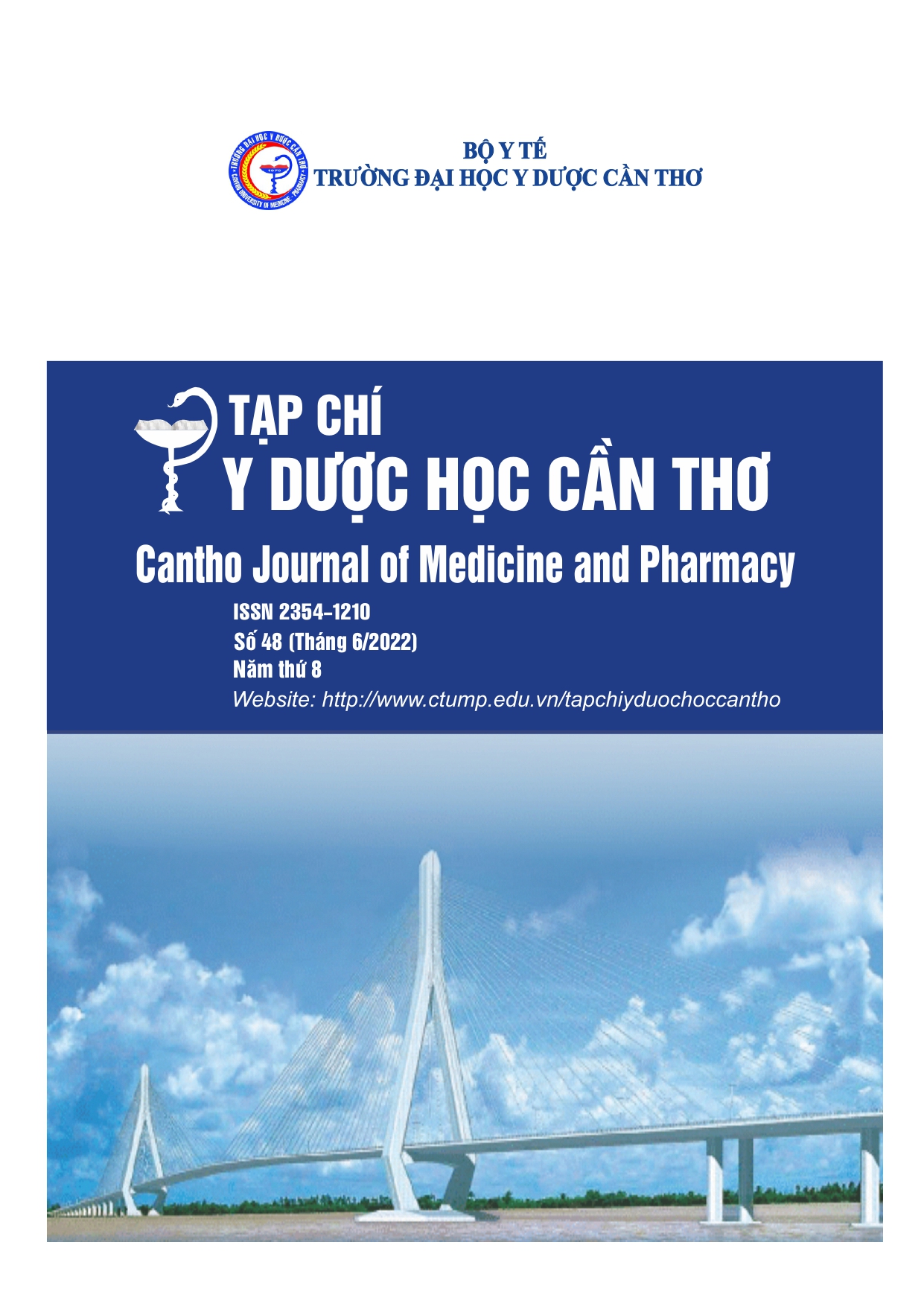SURVERING DIFFERENCE OF KNOWLEDGE, PRACTICES TOWARDS HAND WASHING AND MASK WEARING TO PREVENT COVID‐19 AMONG ELDERLY AND NON-ELDERLY PATIENTS IN THONG NHAT HOSPITAL AT HO CHI MINH CITY
Main Article Content
Abstract
Background: Preventing the spread of COVID-19 plays a very important role during the pandemic, especially in the elderly. However, the knowledge and practice of hand washing and mask wearing to prevent COVID-19 among the elderly have not been clearly studied. Objectives: Survey difference of knowledge, practices towards hand washing and mask wearing to prevent COVID‐19 (coronavirus disease 2019) among elderly and non-elderly patients in Thong Nhat hospital, Ho Chi Minh City. Materials and methods: We conducted a cross-sectional study among patients who come to outpatient care at Thong Nhat Hospital, Ho Chi Minh City from May 2020 to July 2020. Researchers interviewed patients directly using prepared questionnaires.Results: A total of 1555 patients, 69.6% elderly patients and 30.4% younger patients. 79.9%-99.4% of patients in the both group frequently wash their hands. The rates of patients washing their hands with hand sanitizer or soap in the elderly and non-elderly groups were 82.4% and 85.2%, respectively (p=0.496). Nearly all of the patients in both groups wore masks when going out in the last month (98.1% versus 98.7%, p=0.360). Knowledge on how to wash hands and wear masks from the internet was lower in elderly patients than in non-elderly patients (17.5% versus 39.7%, p<0.001). Conclusions: Most patients
had the knowledge and good practice of washing their hands regularly and wearing a mask when going out. However, knowledge and practice in elderly patients was not as good as in non-elderly patients.
Article Details
Keywords
COVID-19, knowledge, practice, elderly
References
2. CDC. COVID-19 Provisional Counts - Weekly Updates by Select Demographic and Geographic Characteristics, National Center for Health Statistics (2020), Available online at: https://www.cdc.gov/nchs/nvss/vsrr/covid_weekly/index.htm (accessed March 22, 2021).
3. Martins Van Jaarsveld, Gabrielle (2020), “The Effects of COVID-19 Among the Elderly Population: A Case for Closing the Digital Divide”, Frontiers in Psychiatry, 11(1211).
4. Perrotta F, Corbi G, Mazzeo G, Boccia M, Aronne L, et al. (2020), “COVID-19 and the elderly: insights into pathogenesis and clinical decision-making”, Aging Clin Exp Res, 32(8), 1599-1608.
5. Sally MEI, Marwa AMM (2020), “Relationship Between Knowledge, Preventive Practices and Fear from COVID-19 among Middle Aged and Older Adults: During the Novel Coronavirus Outbreak”, American Journal of Nursing Science, 9(5), 333-346
6. Salman M, Mustafa Z, Asif M, Zaidi H, Hussain Kh et al. (2020), “Knowledge, attitude and preventive practices related to COVID-19: a cross-sectional study in two Pakistani university populations”, Drugs & Therapy Perspectives, 9, pp.1-7.
7. Zhong BL, Luo W, Li HM, Zhang QQ, Liu XG et al. (2020), “Knowledge, attitudes, and practices towards COVID-19 among Chinese residents during the rapid rise period of the COVID-19 outbreak: a quick online cross-sectional survey”, Int J Biol Sci, 16(10), 1745-1752.
8. Zhou F, Yu T, Du R, Fan G, Liu Y et al. (2020), “Clinical course and risk factors for mortality of adult inpatients with COVID-19 in Wuhan, China: a retrospective cohort study”, The Lancet, 395(10229), pp.1054-1062.


